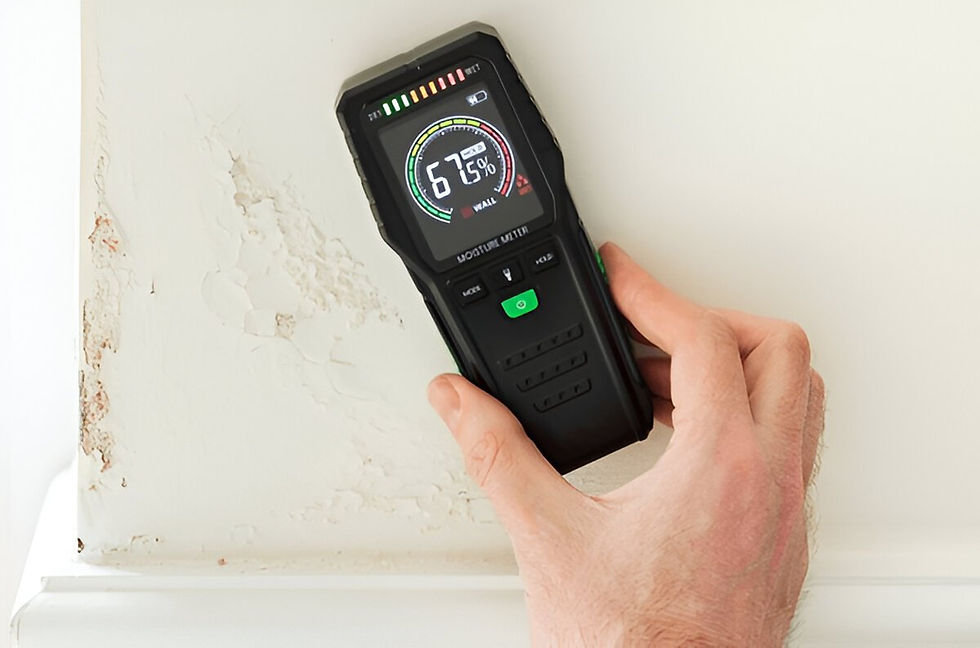Flood Damage Recovery: Mold Prevention Tips Every Homeowner Should Know
- mariotovaropo
- May 24
- 4 min read

Flooding can be a devastating experience for homeowners, leading to significant property damage and health risks, particularly from mold growth. Mold thrives in damp environments, making post-flood recovery a critical time for homeowners to act swiftly and effectively. Understanding how to prevent mold after flood damage is essential for safeguarding your home and health. This article provides comprehensive tips and strategies for mold prevention, ensuring a safe and healthy living environment.
Understanding Mold and Its Risks
Mold is a type of fungus that can grow on various surfaces, particularly in moist conditions. It reproduces through spores that can easily become airborne, posing health risks to individuals, especially those with respiratory issues or weakened immune systems.
Health Implications of Mold Exposure
Exposure to mold can lead to a range of health problems, including:
Respiratory Issues: Mold spores can trigger asthma attacks and other respiratory conditions.
Allergic Reactions: Symptoms may include sneezing, runny nose, and skin irritation.
Infections: Individuals with compromised immune systems are at a higher risk of severe infections.
Identifying Mold Growth
Mold can be visible or hidden. Signs of mold include:
Visible Mold: Dark spots on walls, ceilings, or furniture.
Musty Odors: A persistent damp smell can indicate hidden mold.
Water Damage: Stains or discoloration on surfaces often signal moisture issues.
Immediate Actions After Flooding
After experiencing flood damage, taking immediate action is crucial to prevent mold growth. Here are essential steps to follow:
Safety First
Before re-entering your home, ensure it is safe:
Wait for Professional Clearance: Only return once authorities confirm it is safe.
Check for Hazards: Look for downed power lines, gas leaks, or structural damage.
Documenting Damage
Before starting cleanup, document the damage for insurance purposes:
Take Photos: Capture images of affected areas and belongings.
Contact Your Insurance Provider: Report the damage and understand your coverage.
Drying Out Your Home
The most effective way to prevent mold is to dry out your home as quickly as possible. Here’s how to do it:
Remove Standing Water
Use Pumps: Employ submersible pumps to remove large amounts of water.
Wet Vacuums: For smaller areas, use wet vacuums to extract water from carpets and floors.
Ventilation
Open Windows and Doors: Allow fresh air to circulate throughout your home.
Use Fans: Position fans to promote airflow and speed up the drying process.
Dehumidification
Dehumidifiers: Utilize dehumidifiers to reduce humidity levels in the air.
Monitor Humidity: Aim for indoor humidity levels below 60% to inhibit mold growth.
Cleaning and Disinfecting
Once your home is dry, thorough cleaning is essential to eliminate any remaining mold spores.
Cleaning Surfaces
Use Detergents: Clean surfaces with water and detergent to remove visible mold.
Avoid Mixing Chemicals: Never mix bleach with ammonia, as this can produce toxic fumes.
Disposing of Contaminated Items
Throw Away Non-Salvageable Items: Discard items that cannot be thoroughly cleaned and dried, such as carpets or upholstered furniture.
Personal Protective Equipment (PPE)
When dealing with mold cleanup, protecting yourself is paramount.
Essential Gear
Respirators: Wear an N-95 respirator to filter out mold spores.
Gloves: Use non-latex gloves to protect your skin from mold exposure.
Goggles: Safety goggles will shield your eyes from dust and spores.
Professional Help
In some cases, mold remediation may require professional assistance.
When to Call Experts
Extensive Damage: If mold covers a large area (more than 10 square feet), consider hiring professionals.
Health Concerns: If anyone in your household has health issues, professional remediation is advisable.
Choosing a Mold Remediation Service
Check Credentials: Look for certifications from recognized organizations such as the Institute of Inspection, Cleaning and Restoration Certification (IICRC).
Get Multiple Quotes: Compare services and prices to find the best fit for your needs.
Long-Term Mold Prevention Strategies
After addressing immediate concerns, implement long-term strategies to prevent future mold growth.
Regular Inspections
Routine Checks: Regularly inspect your home for signs of moisture or mold.
Address Leaks Promptly: Repair any leaks in plumbing or roofing immediately.
Maintain Proper Ventilation
Use Exhaust Fans: Install exhaust fans in bathrooms and kitchens to reduce humidity.
Open Windows: Encourage airflow by opening windows when weather permits.
Control Indoor Humidity
Use Dehumidifiers: In humid climates, consider using dehumidifiers year-round.
Monitor Humidity Levels: Keep indoor humidity below 60% using hygrometers.
Understanding Flood Insurance
Flood insurance can be a lifesaver in the event of water damage. Here’s what you need to know:
Types of Coverage
Building Coverage: Protects the structure of your home.
Contents Coverage: Covers personal belongings within your home.
Filing a Claim
Document Everything: Keep detailed records of damage and repairs.
Follow Up: Stay in contact with your insurance adjuster to ensure your claim is processed.
Community Resources and Support
After a flood, local resources can provide assistance and support.
Local Organizations
Disaster Relief Services: Many organizations offer help with cleanup and recovery.
Community Support Groups: Connect with others who have experienced similar situations for emotional support.
Government Assistance
FEMA: The Federal Emergency Management Agency provides resources and assistance for flood recovery.
Local Agencies: Check with local government offices for additional support programs.
Conclusion
Recovering from flood damage requires prompt action and careful planning to prevent mold growth. By understanding the risks associated with mold, taking immediate steps to dry and clean your home, and implementing long-term prevention strategies, homeowners can protect their health and property. Remember, when in doubt, don’t hesitate to seek professional help to ensure a safe and thorough recovery process.
For more information about Flood Damage in Plainfield New Jersey please contact:
Business Name: Green Guard Mold Remediation Plainfield
Address: 321 E 3rd St, Plainfield, NJ 07060
Phone Number: +1 888-793-7963
Google Map: https://maps.app.goo.gl/kXjxL35cW6kY4Jvx9





Comments